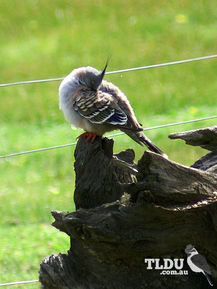
Shoppers Feedback:
Jan 17, 2017
Hello Ros,
I have now paid the invoice, but I would like to write to you just to say a big THANK YOU for getting me the Penguin!
The ChatterMate Penguin became a nice memory for me when I was in New Zealand, and I am so greatful to you for arranging so that I could have it! :-)
Thank you so much!!!!!!!!!!!
Regards,
Malin
Hi Ros,
Many thanks for your very kind email. I really appreciate your prompt reply!
I appreciate your advice regarding the decorations and customs. These are a gift for my daughter’s exchange student family so when she returns home on the weekend I will show her and see if she loves them as much as I do!
Thanks so very much again - I am truly grateful for your kind assistance.
Kind Regards
Bernadette
Ros,
Thanks again for the great customer service. It's a refreshing change!
Best regards,
Trevor
Hey Roz,
Thank you for your emails. Just loved my first order. The cute little Aussie bush critters are going to be used for an office Christmas decoration. My colleagues also liked them and talked about making an order to your site. I'll send you a photo when completed.
I'll be ordering more to send to my daughter's host family in America.
Fabulous service from you.
Kind regards,
Michelle
Thankyou. Order arrived today. One very happy grandson with his new beastly binoculars.
Regards,
Irene
- Home
- Wild Wonders
- Shop
- Aromas of Australia
- Australian Made
- Books
- Book Marks
- Christmas Decoration Sale
- Christmas Decorations
- Clocks
- Drink Holders
- Garden & Outdoor
- Gift Wrapping & Cards
- Home & Giftware
- Jewellery
- Keyrings
- New Products
- Pencils & Pen Holders
- Photo Frames
- Plush Toys
- Plush with Sound
- Sheepskin Rugs
- Stationery
- Stone Carvings
- Toys & Games
- Travel Goods
- Wedding
- Wild Figurines
- Wildlife Safety Products
- Wind Chimes
- Wine Charms
- View All Products
- Wildlife
- Australiana
- Explore
- Contact Us
Crested Pigeon

Quick Facts
| Length: | 35 cm |
| Height: | - |
| Weight: | 207 grams |
| Colour: | - |
| Habitat: | Lightly wooded grassland in rural and urban areas. Usually near water |
| Food: | Native Seeds as well as introduced crops and weeds. Leaves and insects are also eaten |
| Predators: | - |
| Status: | Not Present is TAS but Secure in all other states and territories of Australia |
The Crested Pigeon is a stocky pigeon with a conspicuous thin black crest. Most of the plumage is grey-brown, becoming more pink on the underparts. The wings are barred with black, and are decorated with glossy green and purple patches. The head is grey, with an pinkish-red ring around the eye. If startled, this pigeon takes to the air with a characteristic whistling flight, and glides with down turned wings. The whistling sound is produced by the air passing over a modified primary feather on the wing. Upon landing, the pigeon swings its tail high in the air.
The Crested Pigeon is one of only two Australian pigeons that possess an erect crest. The Spinifex Pigeon, markedly smaller (20 cm - 24 cm) than the Crested Pigeon, has cinnamon coloured plumage and a bright red facial patch. The much larger (40 cm - 46 cm) Topknot Pigeon, has a shaggy, reddish brown drooping topknot.
The Crested Pigeon is native to Australia and is common throughout most of the mainland.
The Crested Pigeon is found in lightly wooded grasslands in both rural and urban areas. It is usually found in the vicinity of water, as it has to drink every day, and is absent from the denser forests.
The Crested Pigeon's diet consists mostly of native seeds, as well as those of introduced crops and weeds. Some leaves and insects are also eaten. Feeding is in small to large groups, which also congregate to drink at waterholes. Birds arrive in nearby trees, and often sit for long periods before descending to drink. Drinking and feeding are most common in morning and evening, but can occur at any time.
The Crested Pigeon builds a delicate nest of twigs, placed in a tree or dense bush. Both sexes share the incubation of the eggs, and both care for the young.
Last Updated: Wednesday 17th July, 2013
BUSH e-TELEGRAPH
Signup for our monthly newsletter the "e-Telegraph"
Quick Links
Home | The Beginning | About The Land Down Under | Wild Wonders | Advertise on Wild Wonders | Christmas Decoration Sale | Christmas Tree Decorations | Drink Holders | Plush with Sound | Stone Carvings | Wildlife Wine Charms | Freebies | Australian Wildlife | Help Our Wildlife | Australiana | Photo of the Month | Explore The Land Down Under | Contact Us | Legal Notices

